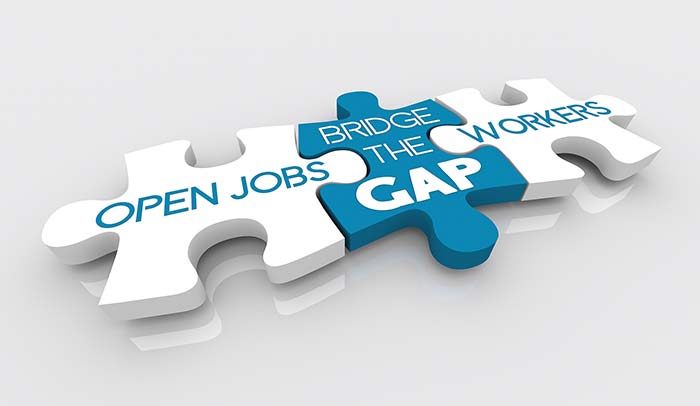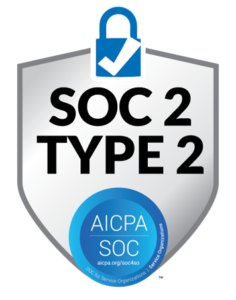Labor turnover remains a big issue for supply chain organizations. And with 9.9 million job openings in the U.S., according to the U.S. Chamber of Commerce, the demand for labor isn’t likely to dissipate anytime soon.
While labor-shortages can be found across nearly every industry, they’re especially prevalent within the supply chain. A CNBC survey of logistics managers found that 75% of respondents face problems with hiring, while 65% are troubled with employee burnout. Similarly, 57% of supply chain executives surveyed by MHI and Deloitte report said that hiring and retaining qualified workers was their biggest supply chain challenge. And it’s not just hourly associates that are in high demand, but operations management as well, which adds even more complexity.
The difficult supply chain labor market is the culmination of several factors. The continued growth of ecommerce has not only brought with it more jobs but pressure to get goods out the door as quickly as possible – often within a few hours. That pressure is then passed down to employees at every level, over time leading to low morale and burnout.
But it’s not just the pressure of the work that’s affecting employees, but the work environment itself. In fact, a recent study showed that 41% of respondents reported that a bad workplace culture has impacted their productivity. And 57% of employees who quit their jobs did so because of feeling disrespected – whether due to a lack of transparency, low engagement levels, dismissive behavior from leadership or other reasons.
Combating Labor Challenges
Organizations have begun implementing a wide range of strategies to combat labor shortage and retention issues. Some have increased adoption of automation technology or streamlining processes, while others have begun using multiple staffing agencies to be more agile and diversify their recruiting services.
While those strategies can all be helpful, your first step to effectively combat short-term and long-term labor market challenges should be taking a strategic approach to labor management – not only to attract and retain employees but to optimize their performance as well. Here are key characteristics TZA is seeing from its high-performing customers as they are navigating labor challenges.
1. Continual Employee Engagement
Companies that get the highest level of performance out of their workforce provide consistent engagement with their employees. These organizations ensure that everyone – from operations management to hourly associates – understands what is expected of them and how they fit into the overall goals of their specific team or facility. Engineered labor standards provide an accurate means for setting clear and fair expectations and have shown to boost worker productivity as much as 15%. They also create the foundation for accurate labor planning, increased engagement, and performance coaching efforts, which helps employees further develop skills and proactively address any issues before they become problems.
2. Standard Operating Procedures
An effective labor management program establishes best practices and standard operating procedures (SOPs). This outlines the most efficient way to complete tasks. Defined SOPs also result in a more effective onboarding process for new employees, improving both overall facility performance, employee morale and, ultimately, higher retention rates. Having SOPs along with real-time performance visibility in place allows high-performing organizations to quickly identify teams, departments and facilities that may be underperforming and react quickly when needed. This helps create (and maintain) a positive work culture and keep employee morale high.
3. Real-Time Performance Visibility
To get the most out of your workforce you need to know what’s happening across your operation. That’s why many leading companies utilize a labor management system (LMS) with business intelligence (BI) reporting, which provides real-time performance data for individual employees as well as teams, departments, facilities and more. These tools allow floor supervisors to quickly identify employees who may require additional training and provide senior leaders real-time visibility into how facilities and or departments are performing against their defined performance goals.
But performance visibility doesn’t just benefit management. Sharing real-time performance data with hourly associates and frontline supervisors on the floor provides added motivation and boosts productivity, especially when performance is tied to incentives or recognition, or impacts the avoidance of overtime.
4. A Positive Company Culture
A positive work environment helps attract and retain employees while boosting productivity. In fact, 71% of leaders say that “engaged, happy employees are pivotal to their company’s success.” Studies also show that companies with highly engaged employees can be 21% more profitability. Establishing a work culture of transparency, engagement and respect, where employees are rewarded or recognized for their efforts, makes your team feel valued.
Looking Forward
U.S. manufacturing is expected to have 2.1 million unfilled jobs by 2030, according to Deloitte. With the labor shortage likely to continue, businesses must proactively take steps to attract, retain and optimize their workforce. Having an effective labor management program helps give businesses the visibility and control they need to succeed in today’s challenging labor market.
Connect with TZA today to learn how to boost your team’s morale and performance in order to take your operation to the next level. Schedule a complimentary audit of your current labor management program.
Author: Jason Morrisey, Account Manager, Customer Success Team
Related TZA Resources:
• PROTRACK LABOR MANAGEMENT SOFTWARE OVERVIEW
• ESSENTIAL COMPONENTS FOR A HIGH-PERFORMANCE WORKFORCE
• USING A LABOR MANAGEMENT SYSTEM (LMS) TO COMBAT RETENTION ISSUES


